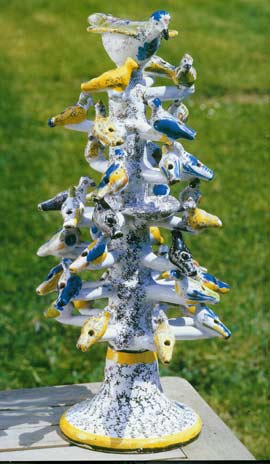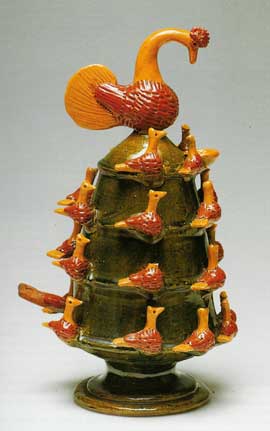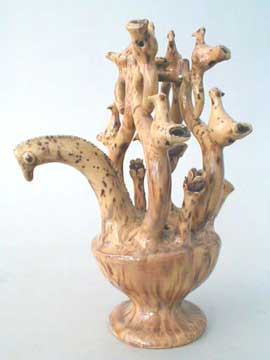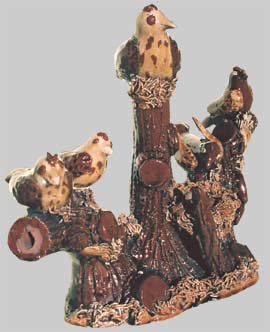 |
: the outstanding whistles |
||||||||
 France: Beaumont-les-Autels (Eure-et-Loir) 19th century Private Col. Photo "Faïences du Perche" de Layre-Mathéus; Hamelin Ed Amis du Perche 2000 |
Most of the whistles were children toys or hullabaloos instruments but the dimension and the sophistication of a few whistles make such use impossible for those extraordinary whistles. Those whistles represent usually a big bird shaped whistle with little birds (which can be themselves whistles). |
 Belgium: Louvain Moneybox-whistle, Emmanuel Van Steenbeeck Circa 1900 Col. Musical instrument museum Bruxelles Photo "Instruments populaires européens" ed Mardaga et MIM 2000 |
|||||||
 Belgium: Torhout early 19th C. H: 21,6cm; l: 14,2; P: 17,3; Weight 660g Museum hotel Sandelin in Saint-Omer (France) Inv 986.044 Photo Musée Sandelin |
No book or oral account explains the purpose of the potters when they made such whistles which needed a remarquable expertise. We can only make hypothesis. Thus, those whistles could be:
|
||||||||
| In the past centuries, the potters seldom made a product only for pleasure, especially such whistles which needed many time to make. It is more probable that these whistles were produced for clients or were some presents. As in many case there are not unique piece, such models must be considered as expensive whistles made for the richest clients. It is the case for the English whistles shaped as birds in a tree which were placed on the mantelpiece or on the windowsill (see the whistle of June 04). It is also true for the wonderfull bird of the museum Sandelin (see photo) because a similar whistle can be seen in the museum of the town of Torhout. The even more amazing whistles-tree made in Beaumont in France is part of a pair. |
 Angleterre Derbyshire? 19ème S. H: 24cm; l: 30; P: 10; poids 660g Col. particulière |
||||||||
| Whatever was the purpose of the potters, those whistles are amazing pieces shown in museums. It could be a reason to visit the museums in Europe especially in Belgium or France.
|
|||||||||